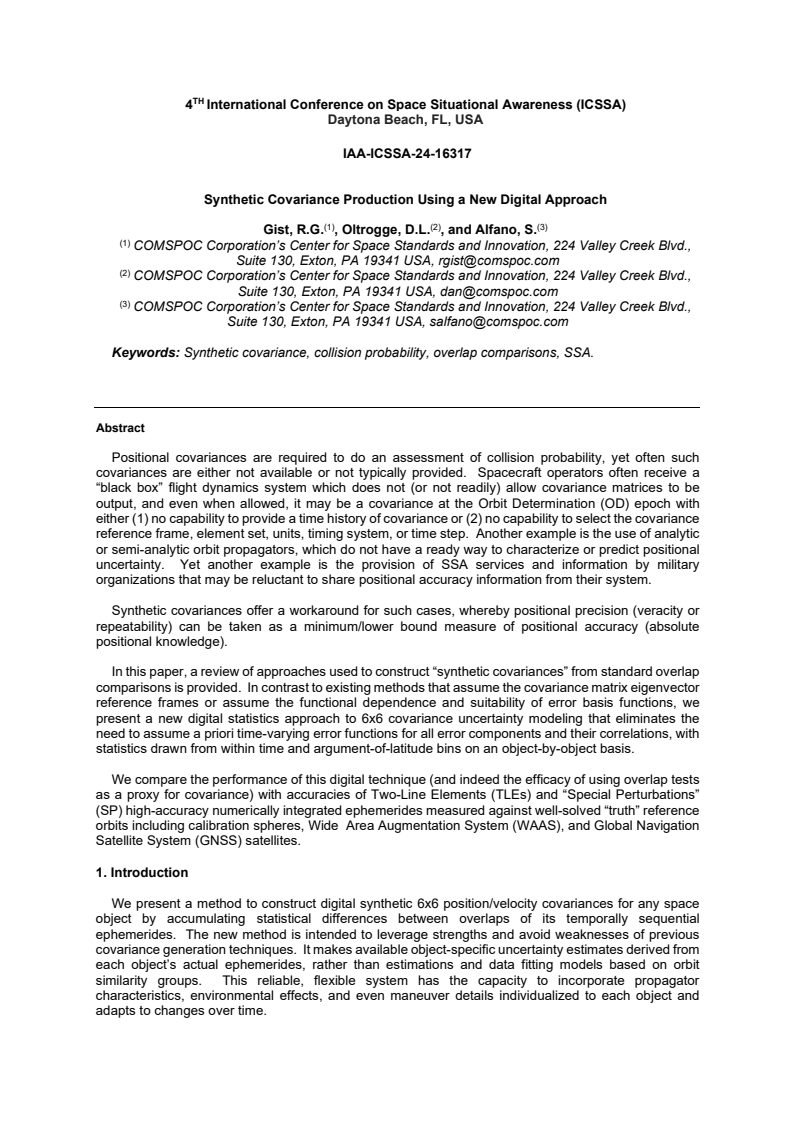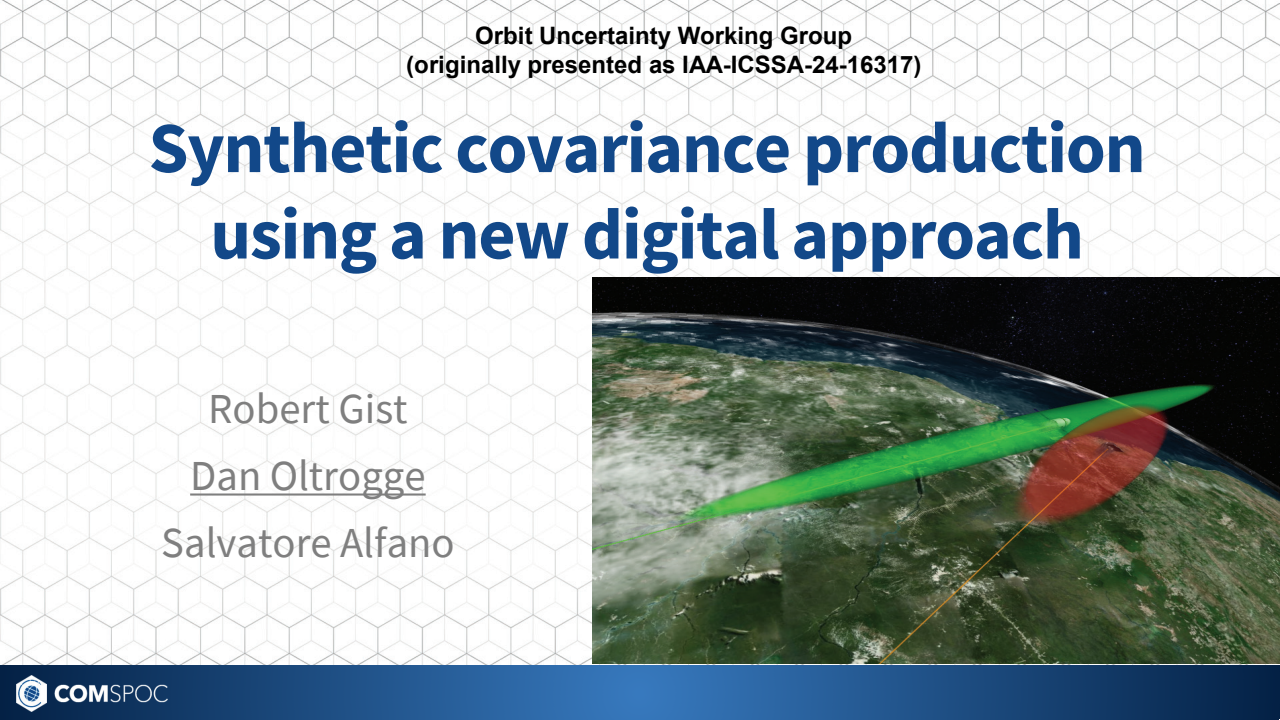Synthetic Covariance Production Using a New Digital Approach


Id: 364
Type: Conference paper
Published: 05/09/2024
Event: International Conference on Space Situational Awareness (ICSSA)
Authors:
Click an author to filter the list of related assets below.Abstract:
Positional covariances are required to do an assessment of collision probability, yet often such covariances are either not available or not typically provided. Spacecraft operators often receive a “black box” flight dynamics system which does not (or not readily) allow covariance matrices to be output, and even when allowed, it may be a covariance at the Orbit Determination (OD) epoch with either (1) no capability to provide a time history of covariance or (2) no capability to select the covariance reference frame, element set, units, timing system, or time step. Another example is the use of analytic or semi-analytic orbit propagators, which do not have a ready way to characterize or predict positional uncertainty. Yet another example is the provision of SSA services and information by military organizations that may be reluctant to share positional accuracy information from their system. Synthetic covariances offer a workaround for such cases, whereby positional precision (veracity or repeatability) can be taken as a minimum/lower bound measure of positional accuracy (absolute positional knowledge). In this paper, a review of approaches used to construct “synthetic covariances” from standard overlap comparisons is provided. In contrast to existing methods that assume the covariance matrix eigenvector reference frames or assume the functional dependence and suitability of error basis functions, we present a new digital statistics approach to 6x6 covariance uncertainty modeling that eliminates the need to assume a priori time-varying error functions for all error components and their correlations, with statistics drawn from within time and argument-of-latitude bins on an object-by-object basis. We compare the performance of this digital technique (and indeed the efficacy of using overlap tests as a proxy for covariance) with accuracies of Two-Line Elements (TLEs) and “Special Perturbations” high-accuracy numerically integrated ephemerides measured against well-solved “truth” reference orbits including calibration spheres, Wide Area Augmentation System (WAAS), and Global Navigation Satellite System (GNSS) satellites.
Keywords:
Click a keyword to filter the list of related assets below.Citation:
Oltrogge, D.L., Gist, R.G., Alfano, S., and Vallado, D.A., “Synthetic covariance production using a new digital approach,” IAA-ICSSA-24-16317, IAA Conference on SSA, Embry-Riddle University, Daytona Beach, FL, USA, 8 May 2024.
Papers with related authors:

Using Spacebook and Cesium to Promote and Enhance Flight Safety
Read More
Actionability and Persistence Of Conjunction Data
Read More
Actionability and Persistence of Conjunction Data
Read More
Actionability and Persistence of Conjunction Data
Read More

Russian ASAT Debris Cloud Evolution and Risk
Read More
Results of comprehensive STCM data fusion experiment
Read More
Addressing the debilitating effects of maneuvers on SSA accuracy and timeliness
Read More

Comparison of predicted and observed spacecraft encounters from Russian ASAT test
Read More
Efficient assessment of long-term encounter rates with CSSI’s volumetric encounter method
Read More
Evaluation of LEO conjunction rates using historical flight safety systems and analytical algorithms
Read More
Innovative LCOLA tool prioritizing accuracy, launch access and efficiency
Read More
SSA positional and dimensional accuracy requirements for Space Traffic Coordination and Management
Read More
Risk Assessment of Recent High-Interest Conjunctions
Read More
Risk Assessment of Recent High-Interest Conjunctions
Read More
LEO constellation encounter and collision rate estimation: an update
Read More
The cost of not doing debris remediation
Read More
The technical challenges of better Space Situational Awareness and Space Traffic Management
Read More
Probability of Collision: Valuation, variability, visualization, and validity
Read More

A comprehensive assessment of collision likelihood in Geosynchronous Earth Orbit
Read More

Probability of Collision: Valuation, Variability, Visualization, and Validity
Read More

Updated Analytical Partials for Covariance Transformations and Optimization
Read More



